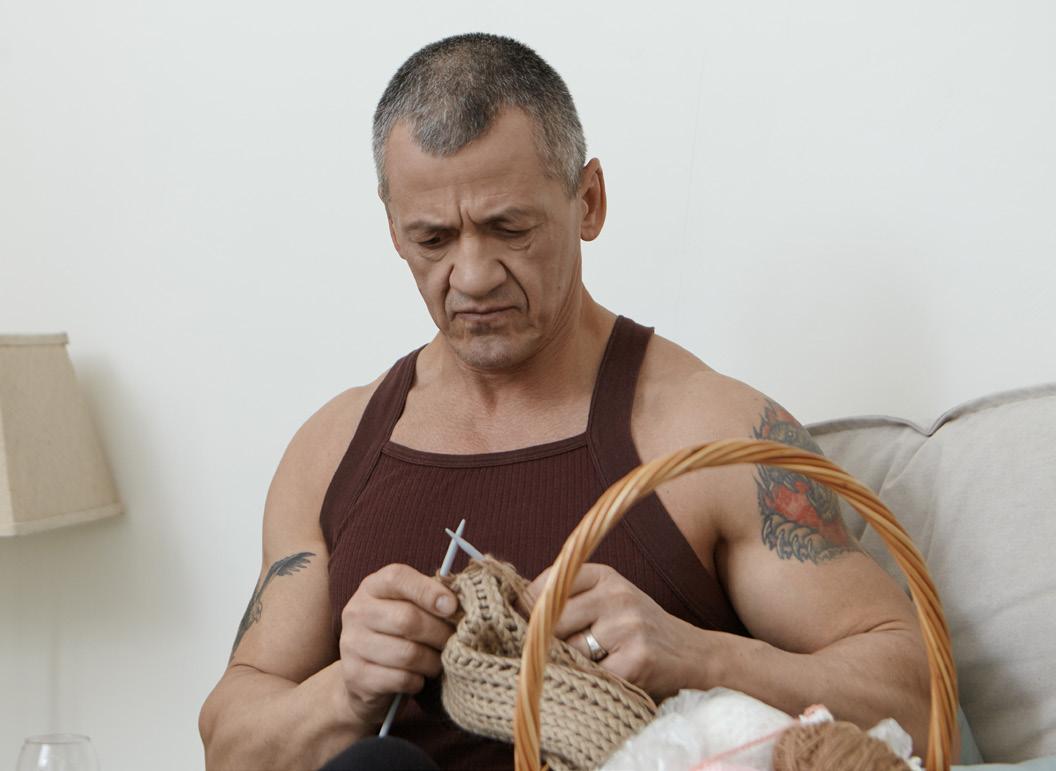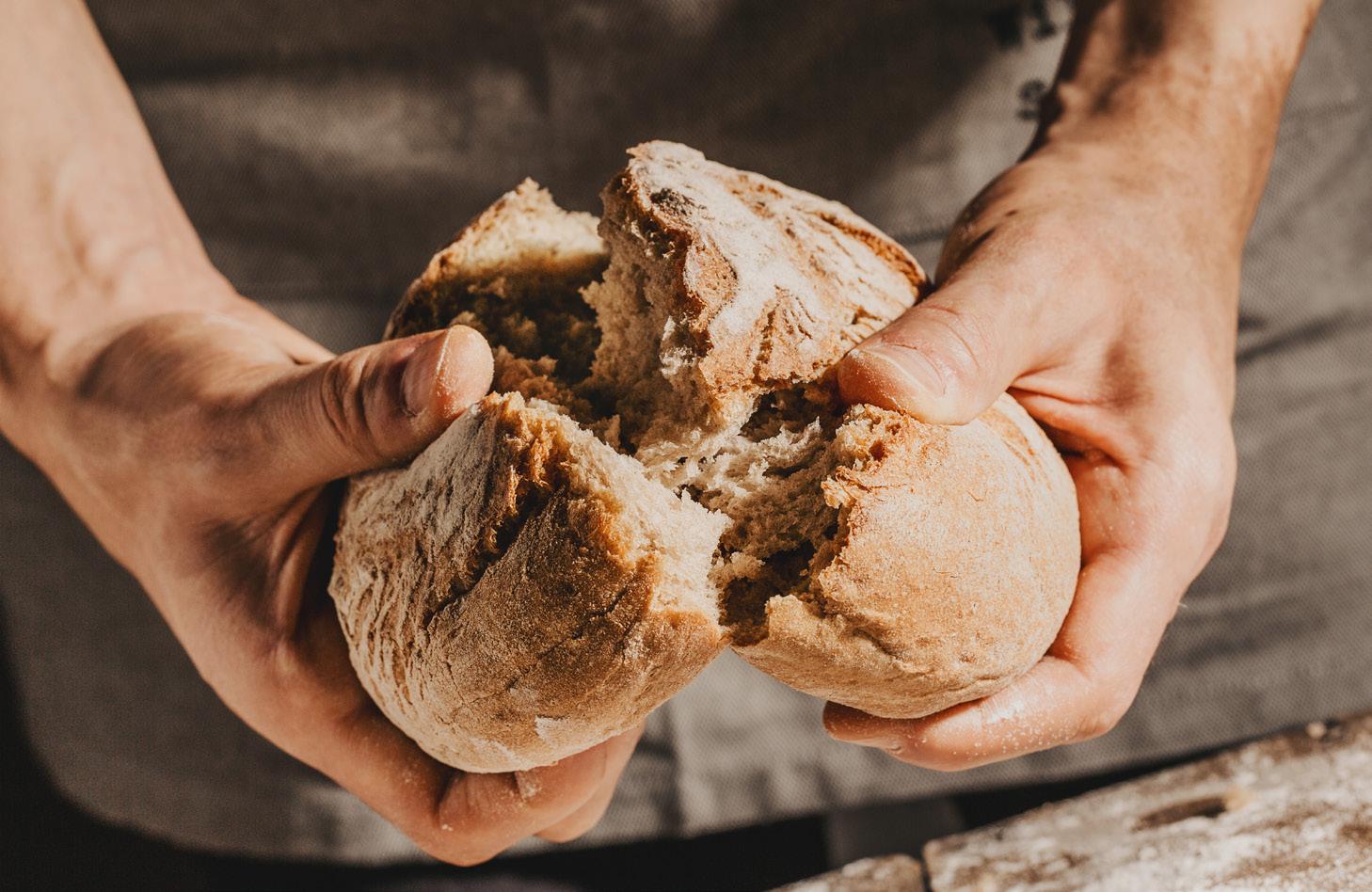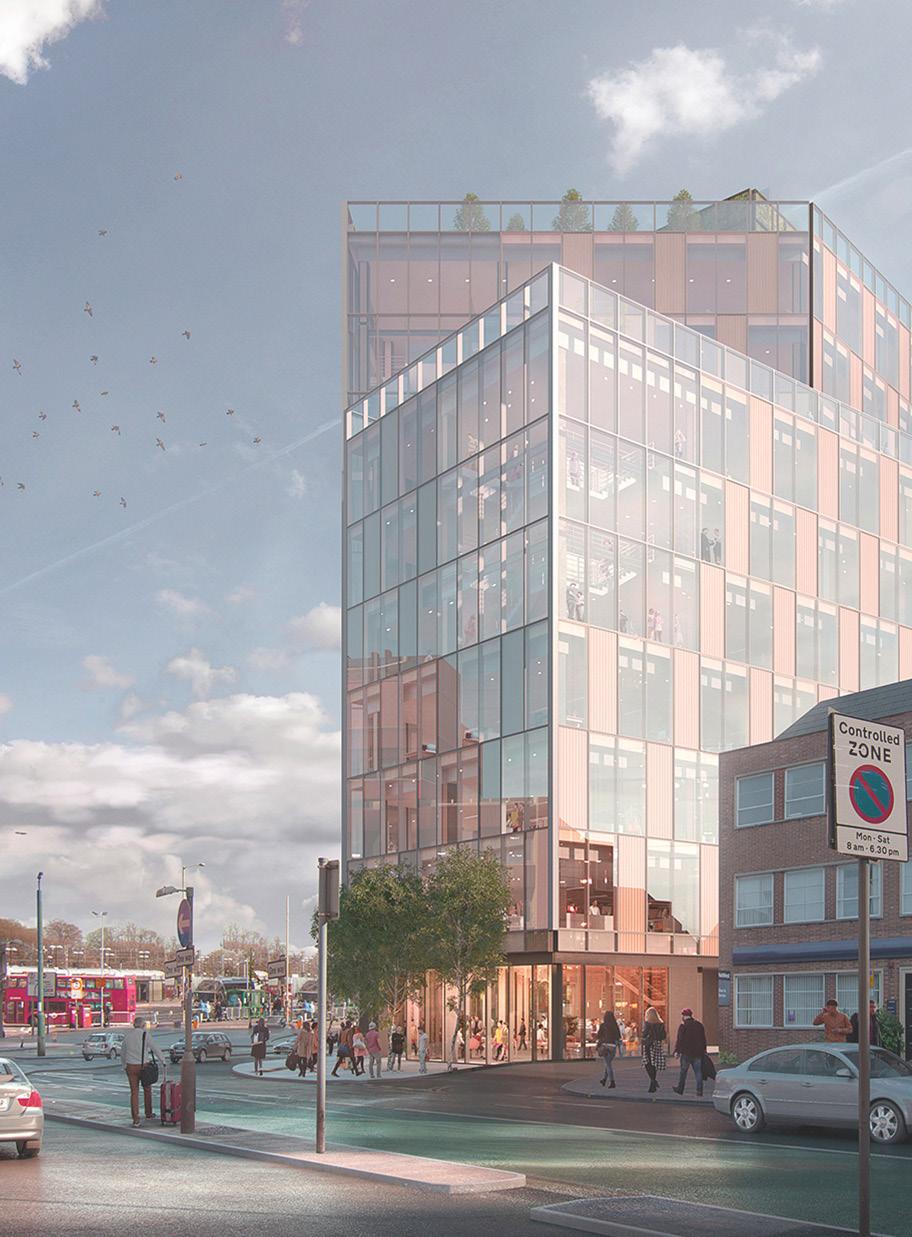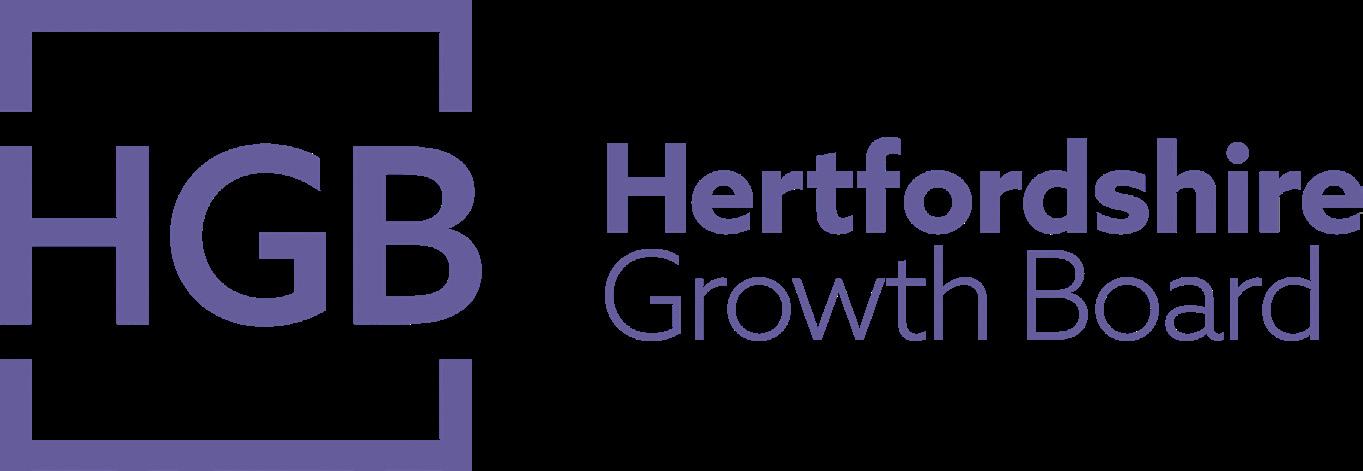
13 minute read
hertfordshire growth board
Beating the winter lockdown blues
This year has been a strain on many lose the reason for which we are making (or are we allowed more than that now?) people, with social isolation, these sacrifices. is absolutely recommended, exercise money or health worries and releases endorphins and reconnecting with boredom topping most people’s lists These struggles were difficult enough to nature can absolutely boost mood, not to of woes. Many have compared ‘this face in the bright warm weeks of April and mention the extra UV rays helping balance generation’s struggle’ to the second world May when sunlight streamed in through melatonin production in your brain, war and found us to come up short, our windows and we could easily sit in the making you feel more awake and happier. lacking in patriotic spirit and compassion. garden or soak up some rays in the local If you’re anything like me, though, hearing However, it’s important to remember park. As the nights draw in and the world that the answer to all mental health issues most of the previous catastrophes that narrows to the four walls of our houses is a brisk walk is getting a little tiresome have faced the human race have involved with the impenetrable black curtain of and in Britain we obviously can’t rely on banding together in times of need and as night just beyond our windows, many the weather. Getting creative can mimic inherently social creatures this is what we will be experiencing the first stirrings of the productivity you might be lacking, it are wont to do. Facing a global pandemic Seasonal Affected Disorder or Seasonal can focus the mind and even encourage that calls on us to isolate ourselves Depression. With varying degrees of dopamine production. So, if you’ve finally from our friends and family destroys lockdown rules expected to make this watched everything on Netflix, try a few of our sense of community and therefore season an even more trying time, it is these suggestions to get your creative juices our motivation. Similarly, in times of important to keep busy, involve yourself flowing while house bound. difficulty, when so many things feel out in activities you enjoy and reach out to of our control, it is so much easier to be friends or family if you are struggling. If you have serious concerns about proactive, helpful and in motion. When yourself or someone you know, please the best course of action is to be sedentary, Keeping busy seek medical assistance right away, isolated and to do nothing, we lose any Of course, getting outside during the cold tea cake cannot be considered an sense of control over the situation and we daylight hours for your 1 hour of exercise alternative to expert advice.
Advertisement
Knitting Knitting is a skill that is often associated with old ladies but infact more and more people are taking up this traditional skill. It is so easy to learn and if you are not fortunate to have someone to teach you then you can either buy a step by step guide or watch a tutorial on YouTube. Either way you will be amazed how easy it is and very therapeutic as well.

If you are a real beginner, you can start off with something simple and it will be such an achievement when you have a finished result to show for your efforts. You can find an abundance of free patterns to download on lots of websites and wool as well. When you get more experienced why not make yourself a simple jumper to keep you warm or a cosy snood to wear on your winter walks.
Baking Is this a skill that you have always wanted to learn and never had the time. You don’t have to buy expensive equipment as a simple camera can work just as well or even a phone or tablet can also be used. When out for a walk stop for a moment and take a look at what is around, and you will be surprised at some of the lovely images that can be taken both locally or when away on your holidays. You can always have the best ones enlarged and framed or even made into a canvas and displayed around your house.
There is nothing more inviting than the smell of freshly baked bread or cakes. Many have discovered and had the time to start baking and bread making for the first time. There was a shortage of flour in the summer lockdown as so many decided to revert back to these skills. Bread is so easy to make and is the proving that takes the most time. It is the best thing to smell your bread cooking in the oven and then waiting patiently for it to cool, before trying a thick slice with lashings of real butter.

Homemade cakes are always a firm favourite of old and young and nothing tastes better than when they are home made. The kids will love helping to make them and of course eat them as well. Many old-fashioned recipes are still firm favourites and below is our traditional Tea Bread recipe that is so easy to make and even fat free as well. It can be
Photography enjoyed at any time of the day, either on its own or with butter or jam.
Cold Tea Cake

Makes 1 Loaf 300ml Cold Tea 450g dried fruit (sultanas, currants, raisins, mixed peel) 175g Brown sugar 2 large eggs 2 tablespoons milk Vanilla essence Mixed spice

Method • Boil fruit and tea for about 5 minutes and leave to go cold. • Add all the dry ingredients together and mix well. • Add the fruit and tea • Beat the eggs together and mix all ingredients well. • Add milk. • Line and grease either a cake or loaf tin. • Pour the mixture in your tin and bake in at 170°C for about 11/2 hours.
Managing future growth together


What is Hertfordshire Growth Board? Hertfordshire Growth Board is the way the county is now working together to manage growth. With the Hertfordshire population expected to rise by up to 175,000 by 2031, at least 100,000 new homes and jobs will need to be created over the same period. This brings opportunities and challenges. Hertfordshire Growth Board is ready to respond.
Our collective stewardship is centred on people, place and prosperity. People means enabling happy, healthy, diverse communities who feel they belong in Hertfordshire and can benefit from its success. Place means making our places contribute to people’s health, happiness, and well-being without compromising the future or our environment. Prosperity means delivering Hertfordshire’s contribution to the UK and national economy while maintaining and further developing a sustainable local economy that creates value for Hertfordshire residents.
While the pandemic has placed a tremendous burden on communities, our vision remains unchanged and is at the heart of recovery. Hertfordshire Growth Board is made up of the County Council, the 10 district and borough councils and Hertfordshire Local Enterprise Partnership. Its 12 members have all signed a Memorandum of Understanding, signalling Hertfordshire’s commitment to collaborative working, putting aside individual organisation’s interests to get things done. There is a collective understanding that ‘the whole is greater than the sum of its parts’.
Here in this feature-length series of exclusive interviews we give biz4Biz readers the chance to find out what motivates three Hertfordshire Growth
Board members to get behind this joint approach and why it signals such positive change for the county.

Cllr David Williams Cllr David Williams is Chair of the Hertfordshire Growth Board, Leader of Hertfordshire County Council and Chairman of the County Councils Network.
Why was it so important for Hertfordshire to create a Growth Board? Hertfordshire has an excellent track record of partnership working across two-tier local government, the Local Enterprise Partnership, health, further and higher education and the constabulary. The Growth Board builds on these excellent relationships. Place leadership is a fundamental responsibility for local government – a long term perspective is necessary and can only be achieved if we take a countywide holistic approach to planning, rather than a district by district piecemeal approach. Successful places require collective buy-in from political, civic and business leaders. Hertfordshire Growth Board is a great example of community and purpose in action.
What is the scale of the growth challenge facing Hertfordshire? Significant. Up to 100,000 homes and jobs are planned to 2031. House price affordability and access to affordable homes is a real issue with huge variation across the county. Hertfordshire Growth Board is committed to delivering the housing Hertfordshire needs. This includes more social and affordable housing; good and inclusive growth that delivers sustainable communities, housing, and places into the future; and accommodating housing and economic growth with sustainable construction and excellent design that does not compromise the attractiveness of our existing places.
COVID-19 has brought considerable hardships to the communities we serve and the scale of the economic impact cannot be under-estimated. Prior to COVID, Hertfordshire was a net contributor, punching well above its weight in economic terms compared to our relatively small size. Now we are looking at up to 80,000 job losses, sector and area impacts and a staggering £5bn drop forecast in GVA, a key metric for measuring productivity. Clearly, the role of the Growth Board in managing growth and long-term economic recovery has never been so important. How do you think the Growth Board will help the county overcome some of the challenges it faces? If the past few months have taught us anything, it is that collaboration is key. In the short term this means doing what we can collectively to ensure our businesses and residents recover from the economic shock of COVID-19 and protect as many of the 80,000 to 100,000 jobs at risk in Hertfordshire as possible. Longer term, we will continue to raise Hertfordshire’s profile and secure central government support and investment for scaled and accelerated housing delivery and put in the necessary infrastructure first to support sustainable development.
Patsy Dell Patsy has extensive experience of leading place-based approaches to growth and development in high growth areas as Assistant Director Growth and Place with Hertfordshire County Council and, before that, in lead roles for nine years in planning and sustainable development at Oxford and Cambridge City Councils. Patsy was appointed Director of the Growth Board in April 2020.
Tell us a little about your background and why you were attracted to this role. Having worked in place-based growth for nearly three decades, I’m really excited by this role. The fact that it was a newly created position only added to my determination to be successful in supporting Hertfordshire and the

Growth Board partners in achieving their
place-based and economic ambitions, particularly from the testing times the county is experiencing because of COVID-19. Making things happen for the benefit of people, places and communities is what gets me up in the morning. In Hertfordshire, there’s a large number of partners around the Growth Board table and an ambitious programme to deliver. It’s central to this role to support that momentum and delivery, and I’m delighted to be able to do this.
How has the board been structured to work effectively? Hertfordshire Growth Board provides strategic co-ordination around growth and place leadership for the ten councils and Local Enterprise Partnership in Hertfordshire. The Growth Board Governance is through an agreed Terms of Reference and Memorandum of Understanding. Each member organisation is represented and has a seat at the table at all Board Meetings. The membership and all our Board Papers are available to view on our website. Over the last 10 months, the Growth Board has been working closely with Government to shape a new relationship with Hertfordshire. With the Chancellor cancelling the Autumn Budget, announcements on funding and Growth Deals across the country have been postponed, but Hertfordshire is ready to respond with programmes and projects to help UK recovery. That is why we are evolving our governance model to provide greater openness and transparency in what we do. The Growth Board as a formal joint committee will signal the strong local commitment to the Growth Board work, its delivery programmes and co-ordinating role, now and in the future.
What does a new deal for Hertfordshire look like? Hertfordshire, like many other areas, is discussing with Government its place-based growth and recovery ambitions and plans. Hertfordshire’s proposals represent a plan to accelerate recovery from the substantial impact of COVID-19 on the local economy, and to grow its way out of the crisis by focusing on skills, infrastructure, technology and accelerating housing delivery. In overseeing its plans, Hertfordshire Growth Board will act as the overall accountable and decision making body. Securing early Government investment will deliver real impact on the ground. We are hopeful that a Growth Deal will be secured sometime in the New Year.
Cllr Sharon Taylor OBE Cllr Sharon Taylor OBE is Leader of Stevenage Borough Council; a position she has held since 2006.
How important is the work of the Growth Board in helping Stevenage to achieve its aims? Working with our Hertfordshire Growth Board partners is essential to deliver the infrastructure and much needed affordable housing for our residents, businesses and communities. We couldn’t achieve this without partnership working. Hertfordshire has a strong legacy of collaboration, evidenced in how we have come together as a county to proactively respond to COVID-19.
Stevenage is currently undergoing an ambitious regeneration programme. What impact has COVID-19 had on these plans? COVID-19 one of the biggest challenges. I am immensely proud of how everyone at Stevenage Borough Council, our NHS, community groups and other partners have rallied together to keep our residents safe and businesses COVID secure. We have a hugely ambitious £1bn regen programme to deliver over the next 20 years and that has not been derailed. The crisis has accelerated changes in our Town Centre that were inevitable and already being planned for. Our transformative programme reflects these changes by providing a combination of retail, residential and commercial facilities in order to create a greater natural demand for services from the larger population of people living, working and shopping here.

What does this regeneration programme mean for the town and its people? Stevenage, as the first New Town, has a legacy of success. It has a very strong advanced engineering and manufacturing base, is home to the biggest cell and gene cluster in the UK, it builds a quarter of all the satellites in space and is home to leading edge defence technology. It also has excellent commuting links to London, Cambridge and the North. The regeneration programme makes it a more attractive proposition in which to live, work, play and relax. Skills development must go hand in hand with our placebased vision to ensure that we challenge low aspirations and achievement and raise awareness of the opportunities available locally. Events such as Generation Stevenage, supported by our major employers in the town, go a long way to giving our young people a stake in its future development and encourage them to aspire to and seek out high-value local jobs.



